| 8 February |
• yesterday • tomorrow |
| Optional Memorial of Saint Jerome Emiliani; Optional Memorial of Saint Josephine Bakhita, Virgin |

• Giuseppina Bakhita
• Madre Moretta
• Sister Moretta
Born to a wealthy Sudanese family, she was kidnapped by slave-traders at age 9, and given the name Bakhita (lucky) by them. Sold and resold in the markets at El Obeid and Khartoum, finally purchased in 1883 by Callisto Legnani, Italian consul who planned to free her. She accompanied Legnani to Italy in 1885, and worked as a nanny for the family of Augusto Michieli. She was treated well in Italy and grew to love the country. An adult convert the Christianity, she joined the Church on 9 January 1890, she took the name of Josephine as a symbol of her new life.
She entered the Institute of Canossian Daughters of Charity in Venice, Italy in 1893, taking her vows on 8 December 1896 in Verona, Italy and serving as a Canossian Sister for the next fifty years. Her gentle presence, her warm, amiable voice, and her willingness to help with any menial task were a comfort to the poor and suffering people who came to the door of the Institute. After a biography of her was published in 1930, she became a noted and sought after speaker, raising funds to support missions.
Her feast has been designated the International Day of Prayer to Stop Human Trafficking.
1868 at Oglassa, Darfur, Sudan
8 February 1947 of natural causes in Italy
• 1 October 2000 by Pope John Paul II at Saint Peter's Basilica, Rome, Italy
• thought to be the only saint originally from Sudan
Sudan
the lucky one; fortunate ( = bakhita); whom the Lord adds (Joseph)
Seeing the sun, the moon and the stars, I said to myself, 'Who could be the Master of these beautiful things?' I felt a great desire to see him, to know him and to pay him homage. - Saint Josephine Bakhita
I have given everything to my Master: He will take care of me… The best thing for us is not what we consider best, but what the Lord wants of us! - Saint Josephine Bakhita
I received the Sacrament of Baptism with such joy that only angels could describe. - Saint Josephine Bakhita
O Lord, if I could fly to my people and tell them of your Goodness at the top of my voice: oh, how many souls would be won! - Saint Josephine Bakhita
If I were to meet the slave-traders who kidnapped me and even those who tortured me, I would kneel and kiss their hands, for if that did not happen, I would not be a Christian and Religious today. - Saint Josephine Bakhita
The Lord has loved me so much: we must love everyone, we must be compassionate! - Saint Josephine Bakhita
I can truly say that it was a miracle I did not die, because the Lord has destined me for greater things. - Saint Josephine Bakhita
Mary protected me even before I knew her! - Saint Josephine Bakhita
When a person loves another dearly, he desires strongly to be close to the other: therefore, why be afraid to die? - Saint Josephine Bakhita
Death brings us to God! - Saint Josephine Bakhita
Rejoice, all of Africa! Bakhita has come back to you: the daughter of the Sudan, sold into slavery as a living piece of merchandise, and yet still free: free with the freedom of the saints. - Pope John Paul II
In our time, in which the unbridled race for power, money, and pleasure is the cuase of so much distrust, violence, and loneliness, Sister Bakhita has been given to us once more by the Lord as a universal sister, so that she can reveal to us the secret of true happiness: the Beatitudes….Here is a message of herioc goodness modeled on the goodness of the Heavenly Father. - Pope John Paul II
https://catholicsaints.info/saint-josephine-bakhita/
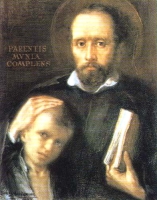
• Geronimo
• Gerolamo Miani
• Jerom Aemiliani
Born wealthy, the son of Angelo and Eleanor Mauroceni Emiliani. His father died when Jerome was a teenager, and he ran away from home at age 15. After a dissolute youth, he became a soldier in Venice, Italy in 1506. Commanded the League of Cambrai forces at the fortress of Castelnuovo in the mountains near Treviso, Italy. Captured by Venetian forces on 27 August 1511, he was chained in a dungeon. He prayed to Our Lady for help, was miraculously freed by an apparition, and hung his chains on a church wall as an offering. Mayor of Treviso while studying for the priesthood. Ordained in the spotted-fever plague year of 1518.
Cared for the sick, and housed orphans in his own home. At night he roamed the streets, burying those who had collapsed and died unattended. Jerome contracted the fever himself, but survived. Founded six orphanages, a shelter for penitent prostitutes, and a hospital. Founded the Order of Somaschi (Company of Servants of the Poor, or Somascan Fathers, or Regular Clergy of Somasca) c.1532, a congregation of clerks regular vowed to the care of orphans, and named after the town of Somasca where they started, and where they founded a seminary; the society was given approval by Pope Paul III in 1540, and continue their work today in a dozen countries. Believed to have developed the question-and-answer catechism technique for teaching children religion. Declared the patron of orphans and abandoned children in 1928 by Pope Pius XI.
1481 at Venice, Italy
8 February 1537 in Italy of a disease caught when tending the sick
16 July 1767 by Pope Clement XIII
• abandoned people
• orphans (chosen by Pope Pius XI in 1928)
• Venice, Italy
• ball and chain
• man shackled with a ball and chain who is attending the sick
• man wearing a ball and chain, and receiving an apparition of Mary and the Child Jesus
I urge you to persevere in your love for Christ and your faithful observance of the law of Christ. Our Goal is God, the source of all good. As we say in our prayer, we are to place our trust in God and in no one else. In his kindness, our Lord wished to strengthen your faith, for without it, as the evangelist points out, Christ could not have performed many of his miracles. He also wished to listen to your prayer, and so he ordained that you experience poverty, distress, abandonment, weariness and scorn. God alone knows the reasons for all this, yet we can recognize three causes. In the first place, our blessed Lord is tell young that he desires to include you among his beloved sons, provided that you remain steadfast in his ways, for this is the way he treats his friends and makes them holy. The second reason is that he is asking you to grow continuously in your confidence in him alone and not in others. Now there is a third reason. God wishes to test you like gold in the furnace. The dross is consumed by the fire, but the pure gold remains and its value increases. It is in this manner than God acts with his good servant, who puts his hope in him and remains unshaken in times of distress. God raises him up and, in return for the things he has left out of love for God, he repays him a hundredfold in this life and with eternal life hereafter. If then you remain constant in faith in the face of trial, the Lord will give you peace and rest for a time in this world, and for ever in the next. - from a letter to his brothers by Saint Jerome Emiliani
https://catholicsaints.info/saint-jerome-emiliani/

• Giuseppa Alhama Valera
• María Esperanza of Jesus
• María Josefa Alhama Valera
• Sister Speranza di Gesù
• Sister Hope of Jesus
Eldest of nine children born to a peasant family. Around the age of 12, possibly due to an apparition of Saint Teresa of Avila, María Josefa received an inspiration that she should spread the devotion to the Merciful Love of Jesus. At age 23 she joined the Daughters of Calvary, taking the name Esperanza de Jesus. Member of the Claretian Missionaries. Founded the Handmaids of Merciful Love in Madrid, Spain on 24 December 1930 to care for and teach poor children and orphans, and to care for the sick and elderly. Worked in Rome, Italy from 1936 to 1951. Founded the Sons of Merciful Love in Collevalenza, Perugia, Italy in 1951. On 22 November 1981, Pope Saint John Paul II visited her at the sanctuary in Collevalenza.
30 September 1893 in Santomera, Murcia, Spain as Josefa Alhama Valera
• 8 February 1983 in Collevalenza, Perugia, Italy
• interred in the crypt of the Sanctuary of Merciful Love in Collevalenza
• 31 May 2014 by Pope Francis
• beatification recognition celebrated at the Sanctuary of Merciful Love, Collevallenza, Perugia, Italy, presided by Cardinal Angelo Amato
• her beatification miracle involved the survival of a child named Francesco Maria in Monza, Italy, who, as an newborn in 1998, was starving due to an inability to digest anything, but was healed by drinking water from the sanctuary of Mother Esperanza
• Handmaids of Merciful Love
• Sons of Merciful Love
Father of Mercy and God of all consolation, we thank you because, through the life and the word of the Mother Esperanza of Jesus, you call us to your Merciful Love. Give us the same confidence in your paternal love and, if it is in your plans to give her the glory that you offer to whoever is faithful to your Spirit and reveals Jesus' goodness to the world, through her intercession, grant to us the grace...(ask for the grace you wish to obtain through the intercession of the Mother Esperanza). We ask this of you, trusting in the help of Mary, Mediatrix of the Mercy we will sing eternally. (Our Father, Hail Mary, Glory Be) – prayer for the intercession of Mother Esperanza, nulla obstat by Bishop Decio Lucio Grandoni, Diocese of Orvieto-Todi, 8 February 1984
https://catholicsaints.info/blessed-esperanza-de-jesus/
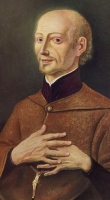
Apostle of the Ries
Johann joined the Jesuits on 19 January 1663 in Landsberg, Germany; he made his solemn vows on 2 February 1677. Ordained a priest on 11 June 1672. Popular and successful missionary, his work at the shrine of Our Lady of Schönenberg brought so many pilgrims to the site that a new church had to be built to serve them all.
5 January 1642 in Eichstätt, Bavaria, Germany
8 February 1704 in Ellwangen, Baden-Württemberg, Germany of natural causes
• 16 July 2022 by Pope Francis
• beatification celebrated at the Basilica of Sankt Vitus, Ellwangen, Germany, presided by Cardinal Marcello Semeraro
• the beatification miracle involved the healing of a man in Ulm, Germany in 1985 who suffered from gallbladder inflamation, severe sepsis, pneumonia, digestive haemorrhage from gastroduodenal ulcer, breathing difficulties and other minor maladies
https://catholicsaints.info/blessed-johann-philipp-jeningen/
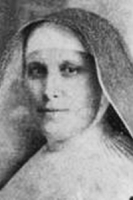
Gabriela, Giuseppina
Raised in a pious family, she was a deeply religious child. Moved to Turin, Italy at age 12. Made a temporary vow of chastity at age 18. At age 26 she returned to Savigliano, Italy to care for her ailing father. Underwent a successful back surgery in 1887, and made a pilgrimage to Lourdes, France to give thanks for her health. There she felt a call to spend her life caring for the poor. In Savigliano she began caring for orphans. In April 1881 she helped found the Sisters of the Holy Family to care for orphans, the poor, and the elderly sick; she served as its superior for the rest of her life. Helped found four more houses of the Sisters. Predicted the date of her own death.
5 September 1843 in Savigliano, Italy
8 February 1906 in Savona, Italy of natural causes
17 May 1995 by Pope John Paul II
https://catholicsaints.info/blessed-josephina-gabriella-bonino/
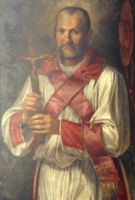
• Peter Aldobrandini
• Peter Mezzobarbo
• Peter of Pavia
• Peter of the Fire
• Peter the Fire-Tried
• Pietro Igneo
Born to the Italian nobility. Vallombrosan Benedictine monk. Accused of simony, Peter under went a trial by fire - he had to walk through fire, and if he was innocent and God was on his side, he would emerge unharmed. Peter's abbot and spiritual teacher, Saint John Gualbert administered the test; Peter survived, was exhonerated, and was know thereafter as Peter Igneus. Abbot of San Salvatore Abbey in Fucecchio, Italy. Cardinal-bishop of Albano. Papal legate to Germany for Pope Saint Gregory VII in 1079. Papal envoy to France in 1084 to promulgate the order of excommunication against Henry IV.
Italy
1089 of natural causes
https://catholicsaints.info/blessed-peter-igneus/
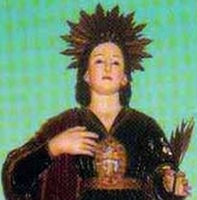
Laureatus of Castelpoto
Martyred in the persecutions of Valerian.
• c.258 in Rome, Italy
• buried in the Santa Ciriaca catacombs in Rome
• some relics transferred to the Church of the Holy Cross Biberbach, Bavaria (in modern Germany) in 1687 where they were enshrine in a jewelled urn, but has since been lost
• some relics enshrined in Venice, Italy, but was since been lost
• a piece of his head was enshrined in Monselice, Padua, Italy, but has since been lost
• his leg is enshrined in a reliquary statue in Castelpoto, Italy
• against cholera (legend says that a procession of his relics ended a cholera epidemic in the town of Castelpoto, Italy)
• Castelpoto, Italy
https://catholicsaints.info/saint-laureatus-of-rome/
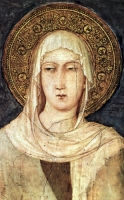
Jacqueline
Born to the Italian nobility. Mother of two sons, grandmother of several children, all of whom she outlived. Widow. Franciscan tertiary. Friend of Saint Francis of Assisi and Saint Clare of Assisi. Legend says that Francis gave her a lamb that followed her back and forth to church, and would wake her in the morning in time for services.
1190 at Torre Asturias, Italy
• c.1273 of natural causes
• buried at Assisi near Saint Francis
https://catholicsaints.info/saint-jacoba/
Evencija, Evencio, Evenzio, Invencij, Invencito, Iuvence, Iuventius, Jovencio, Juvencij
12 September on some calendars due to confusion with Saint Juventius of Pavia
Bishop of Pavia, Italy from 381 to 397, chosen for the see by Saint Ambrose of Milan. Attended the Council of Aquileia in 390 and the Council of Milan, signing the letter condemning the theological errors of Jovinian. A tireless evangelist for the faith in his diocese.
• February 397 in Pavia, Italy of natural causes
• buried in the church of Saints Nazario and Celso; the church was later re-dedicated as Saint Ivenzio
• relics re-discovered in 1574
• relics re-enshrined in 1789 when the church was damaged
https://catholicsaints.info/saint-invenzio-of-pavia/
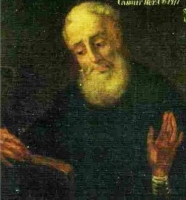
A member of the Augustinian friars. Beginning in 1419, he studied theology in Padua, Italy. He began teaching at the Augustinian house there in 1422, and began teaching theology in 1424. Exceptional professor of Holy Scripture within the order. Provincial visitor of the Augustinians in Poland in 1438. Taught theology at the University of Cracow in 1443. Vicar-general of the Augustinian chapter in Bavaria, Germany in May 1452. Well known in public life for his theological wisdom and teaching skills, he lived a life of piety and zeal for the saving of souls.
c.1400 at Cracow, Poland
8 February 1471 at Cracow, Poland of natural causes
https://catholicsaints.info/saint-isaias-boner/
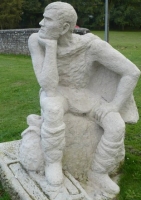
Cuthmann, Cutmano, Cutmanus
Poor but pious youth from the south of England. Cared for his invalid mother following his father's death. Shepherd, spending his time with the flock in prayer. Built a church near his property near Steyning, Sussex, England. Miracle worker in life and afterward.
9th century
• against poverty
• bachelors
• poor people
• shepherds
• single laymen
https://catholicsaints.info/saint-cuthman/
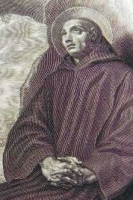
• Stephen of Grandmont
• Stephen of Thiers
• Étienne de...
Educated at Benevento, Italy from age 12 by Archbishop Milo. Founder of the Benedictine house of Grandmont in the forest of Muret, in Limousin, France. Abbot of the house, though never formally a monk.
c.1046 at Thiers, Auvergne, France
8 February 1124 of natural causes
1189 by Pope Clement III
https://catholicsaints.info/saint-stephen-of-muret/
Ciwa, Ciwg, Cwick, Kewe, Kigwoe, Kuet, Kywere
Sister of Saint Congar. She lived a life of quiet sanctity and private vows. Once when she visited her brother in his hermit's cell he refused to see her, fearing that even the sight of his sister would prove a distraction. To prove her holiness, she summoned a wild boar, and miraculously caused it to obey her like a pet. Her brother accepted the event as a sign.
Kew, Cornwall, England
https://catholicsaints.info/saint-kigwe/
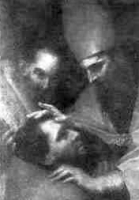
Onorato
Bishop of Milan, Italy in 567 during a time when there was theological conflict with the Arians, battlefield conflict with invading Lombards. Honoratus opposed both, but was driven into exile and never returned to his see.
570
https://catholicsaints.info/saint-honoratus-of-milan/
Onchu, Onchuo
Poet and pilgrim who roamed the memorials and shrines of Ireland, collecting and preserving information about and relics of the saints. He finally retired to the Clonmore monastery who inherited his collection of relics, and who enshrined Oncho as well.
c.600 at the monastery in Clonmore, Ireland of natural causes
https://catholicsaints.info/saint-oncho-of-clonmore/
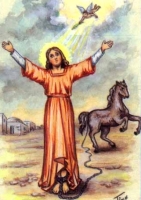
Coint, Cointa, Quinta
Martyred in the persecutions of Decius for refusing to sacrifice to idols.
Egyptian
dragged to death by a horse thru the streets of Alexandria, Egypt in 249
https://catholicsaints.info/saint-cointha-of-alexandria/
Aelflaed, Edilfreda, Ethelfreda, Ethelfleda, Elgiva
Born a princess, the daughter of King Oswy of Northumbria (part of England). She was offered to God as a child at the convent of Hartlepool. Nun at the double monastery of Whitby Abbey with Saint Hilda of Whitby. Abbess of Whitby.
653
714
https://catholicsaints.info/saint-elfleda-of-whitby/
Mengold, Meingaud
Member of a noble family of Liege, Belgium, the County of Huy, Belgium. Known for his personal holiness. Assassinated while returning from a pilgrimage; the killers cared nothing about his faith, and killed him for purely political reasons.
murdered in 892
• bakers
• Huy, Belgium
https://catholicsaints.info/saint-meingold/
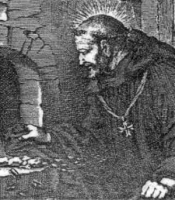
Paulus
Courtier. Hermit on Mount Voge (modern Paulberg) near Trier, Germany. Monk at Tholey, Germany. Bishop of Verdun, France.
c.649
https://catholicsaints.info/saint-paul-of-verdun/
Niceto, Nicezio, Nizier
Bishop of Besançon, France. Friend of Saint Columbanus of Luxeuil.
• 611
• buried in the church of San Pietro
24 November 1900 by Pope Leo XIII (cultus confirmation)
https://catholicsaints.info/saint-nicetius-of-besancon/
Franciscan friar minor at the convent in Foligno, Italy. Known as a miracle worker.
late 12th century
• 1256 of natural causes
• interred in the San Feliciano Cathedral in Foligno, Italy
https://catholicsaints.info/blessed-ermanno-of-foligno/
Gaudin, Gaudino
Bishop of Soissons, France in the late 7th and early 8th centuries. Martyred by loan sharks for preaching against them and their business.
possibly drowned in early 8th century
https://catholicsaints.info/saint-gaudinus-of-soissons/
Community of 5th century monks at the monastery of Saint Dius at Constantinople. Imprisoned and martyred for loyalty to the Vatican during the Acacian Schism.
485 in Constantinople
https://catholicsaints.info/martyrs-of-constantinople-8-february/
An unknown number of Christians murdered in early 6th-century Persia. Legend says that so many miracles occurred through the intercession of these martyrs that the king decreed an end to the persecution of Christians.
https://catholicsaints.info/martyrs-of-persia-8-february/
• Mary of Prague
• Mileda of Prague
Daughter of Duke Boleslav of Czechia. Founded the convent of Saint George in Prague (in the modern Czech Republic).
994
https://catholicsaints.info/saint-mlada-of-prague/
Bonafino
Franciscan friar.
13th century Siena, Italy
1290, location unknown, of natural causes
https://catholicsaints.info/blessed-bonifacio-of-siena/
Aemilian
Armenian monk. Martyr.
https://catholicsaints.info/saint-emilian-of-armenia/
Martyr.
in Rome, Italy
https://catholicsaints.info/saint-cyriacus-of-rome/
Armenian monk. Martyr.
https://catholicsaints.info/saint-sebastian-of-armenia/
Armenian monk. Martyr.
https://catholicsaints.info/saint-dionysus-of-armenia/
Martyr.
in Rome, Italy
https://catholicsaints.info/saint-lucius-of-rome/
Martyr.
in Rome, Italy
https://catholicsaints.info/saint-paul-of-rome/
Nun.
9th century Ireland
https://catholicsaints.info/saint-ruidche/
Nun.
1277
https://catholicsaints.info/saint-gisela/
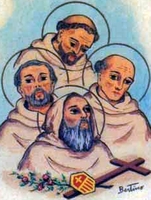
Four Mercedarian friars. They evangelized the area of Provence (in modern France), working to convert Muslims and free enslaved Christians.
https://catholicsaints.info/blessed-alfonso-de-riera/
https://catholicsaints.info/blessed-francesco-de-aretto/
https://catholicsaints.info/blessed-dionisio-rugger/
https://catholicsaints.info/blessed-francesco-donsu/
• Our Lady of the Lily
• Our Lady of Virtues
• John of Villers
• Paul of Loccum
CatholicSaints.Info Portable Edition